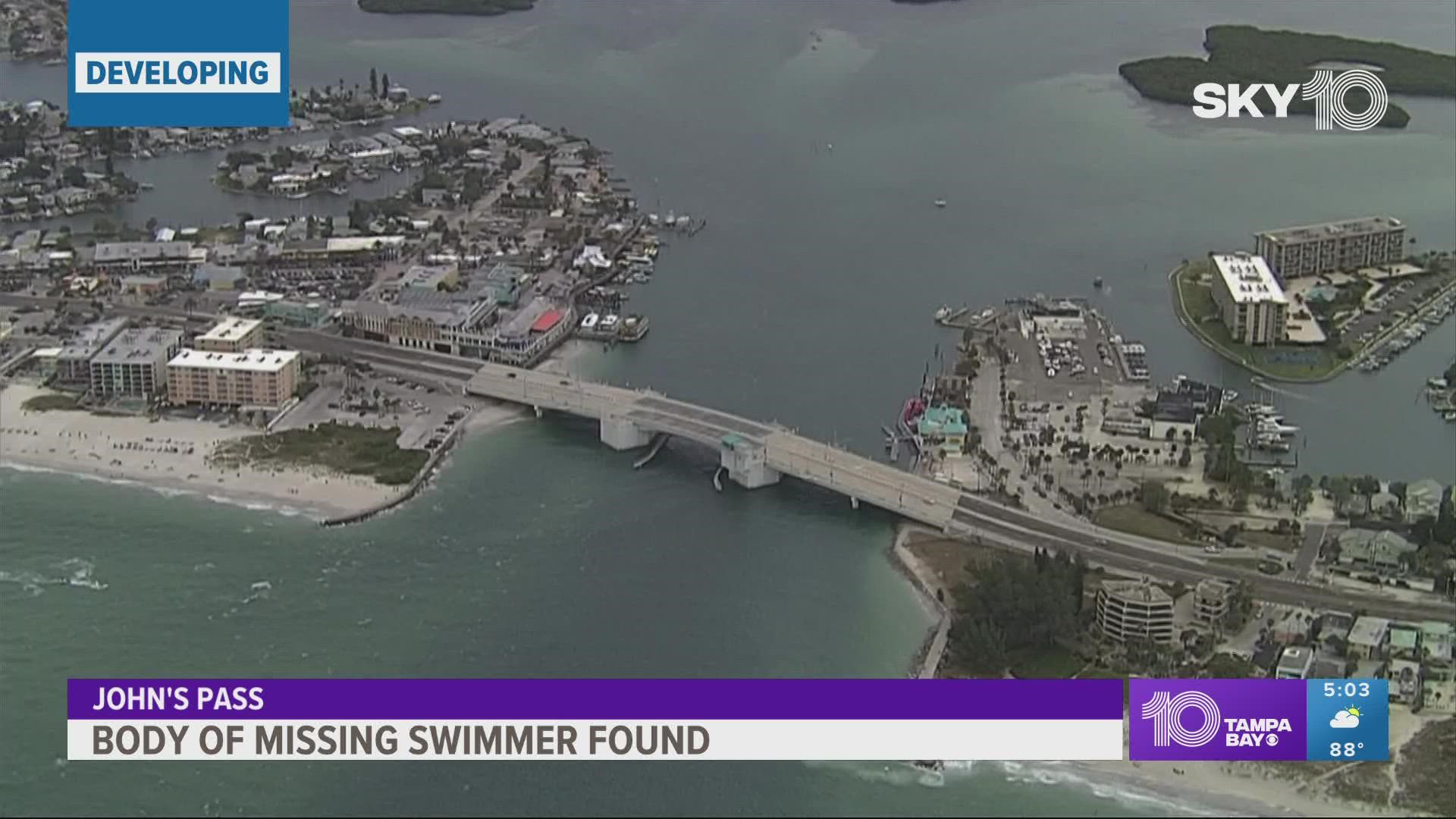MADEIRA BEACH, Fla. — Hubbard's Marina has operated at John's Pass at Madeira Beach since 1976, and in the 90s, staff began to notice sand accumulating beneath the boardwalk.
Construction projects on the south jetty and then a 2006 project on the John's Pass bridge exacerbated the build-up, Captain Dylan Hubbard said.
Today, a sandy semicircle stretches out from the land and into the channel; creating a narrower passage and a faux beach that drops off into deep water and swift currents.
For years, businesses and locals of the area have fought for something to be done about the sand, which has caused numerous concerns for safety and business, but have been met with city and county gridlock.
Finally, a dredging project is underway to remove the sand; funded by $1.5 million from a budget signed by Gov. Ron DeSantis on June 2.
The project will begin sometime after turtle nesting season along the beaches of St. Petersburg and Clearwater ends Oct 31. Right now, the Army Corps is analyzing the sand to be repurposed for beach nourishment, said State Rep. Linda Chaney, R-St. Pete Beach.
Chaney fought for funding to dredge the area for the last two years. She made it a priority after hearing from locals in the area.
"So many of the businesses and residents came to me and said that this was very important to them, that they had been trying to get this done for years, and it was gridlocked," Chaney said.
The build-up has impacted rainwater drainage for both Gulf Boulevard and the city.
"It rains and that drain is clogged with sand that backs up water on the Gulf Boulevard and can cause accidents and prevent access to John's Pass," Hubbard said. "It also blocks the city drain, and when that's clogged with sand, the streets of John's Pass flood."
It's disrupted manatee and dolphin migration patterns; pushing the animals away from the sea wall and into the main channel where boats move across them.
It's prohibited business growth at the boardwalk, as well. Hubbard's Marina is no longer able to operate on one full side of its dock. Hubbard said their boats are the "last line of defense" in keeping the sand back.
"We have to constantly fight every month to hold that sand back or it would completely overtake our dock and leave us with dry land," Hubbard said. "It takes a lot of manpower, a lot of fuel, a lot of wear and tear on our boats, and a lot of long nights trying to battle that sand."
However, the public safety issues are the main cause for concern, Hubbard said. Naive tourists and residents alike find themselves on the half-moon of beach being swept away by strong currents, despite signs warning them not to.
In May, a 22-year-old Virginia man drowned after struggling to swim west of the swim buoys near John's Pass.
Since January 2020, there have been 32 water rescues off of John's Pass, said Clint Belk, the Madeira Beach Fire Department chief. The fire department responds to the most water rescue calls in this location, he said.
Sergeant Ron Blair with the Pinellas County Sheriff's Office Marine and Environmental Lands Unit said its rescue team responds to frequent calls around John's Pass year-round but especially during the summers.
"We have extreme high tides extreme low tides, which really make the current very strong anywhere in the county but especially through our passes," Blair said.
The build-up contributes to the dangerous currents by forcing the water to go through a more narrow pass.
"When you make that pass narrower and narrower, water is going to go through there at a faster pace," Belk said. "They don't realize when they're on the buildup of sand. The water looks like it goes out like a beach but then there's a sudden drop-off, and then they're swept out in the current."
Despite the increased level of danger over the years, John's Pass has been a huge part of the community since the 1800s.
"It's an iconic location not only for tourists, but for locals," Chaney said. "It was something that the residents did not want to lose, which would happen if the pass closed in."
Now, with state funding to dredge the pass, locals and Chaney are excited for the future of the pass.
"Myself and the residents and the businesses are just thrilled beyond belief," Chaney said. "When we saw it got signed, we couldn't even believe it... we were literally jumping up and down on the beach."

